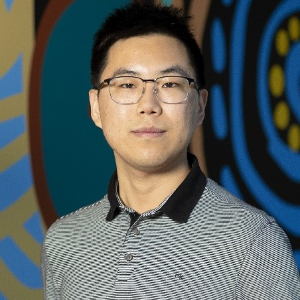Title : Optimisation and artifacts of photothermal excitation of microresonators
Abstract:
The utilization of photothermal excitation for the precise activation of microresonators through focused, intensity-modulated light represents a burgeoning field of research with profound implications for atomic force microscopy (AFM) and related sensor technologies. This method's ability to induce accurate mechanical responses in microresonators without introducing distortions—even in challenging liquid environments—underscores its potential to drive significant advancements in high-resolution imaging and measurement techniques. Despite the progress in enhancing the interaction between light and mechanical systems, notably through the development of specialized coatings aimed at improving light-to-mechanical conversion efficiency, substantial inefficiencies persist. The conversion process remains predominantly inefficient, with the mechanical movements of resonators confined to the scale of tens of nanometers, despite the application of milliwatts of optical power. This limitation not only underscores a pivotal challenge in maximizing photothermal excitation's effectiveness but also highlights the critical gap in our understanding of the photothermal process in liquid environment, particularly in terms of how efficiency is influenced by the microresonator's position relative to the photothermal beam's propagation axis.
To address these challenges, our study embarks on an in-depth exploration of photothermal efficiency across different environments—specifically, air and water—utilizing cantilever microresonators and a custom-engineered picobalance. This investigation reveals critical insights into the spatial dynamics of photothermal efficiency along the beam propagation axis, unveiling that factors such as far out-of-band laser emission can significantly impair the identification of the beam waist, leading to a dramatic reduction in photothermal efficiency by up to an order of magnitude. Further, our research challenges prevailing assumptions about the beam waist's role in optimizing photothermal efficiency. Contrary to expectations, we discover that the beam waist does not invariably correspond to the peak position of photothermal efficiency. In fact, for silicon cantilevers with a trapezoidal cross-section, positioning at the beam waist can diminish photothermal efficiency by as much as 20%. These findings not only provide pivotal corrections to existing misconceptions but also offer a nuanced understanding of the complex interplay between light and mechanical motion in photothermal systems.
The implications of our study extend well beyond the immediate advancements in microresonator technology. By elucidating the intricate dependencies of photothermal efficiency on spatial positioning within the photothermal beam, this research lays the groundwork for more sophisticated and efficient photothermal excitation strategies. These insights hold the promise of enhancing the performance of AFM and other microresonator-based technologies, potentially revolutionizing applications in material science, biology, and nanotechnology through improved sensitivity, precision, and adaptability in dynamic measurement environments. In conclusion, our work not only addresses a critical gap in the photothermal excitation domain but also sets the stage for future research directions. By offering a detailed examination of the factors influencing photothermal efficiency, this study contributes to the broader endeavour of harnessing light for precise mechanical manipulation, paving the way for innovative advancements in the field of nanoscale measurement and imaging.
Audience Take Away:
- The foundation principles of photothermal excitation and its importance in microelectromechanical sensor technology
- The novel method developed for enhancing photothermal effects in sensors, including the technical approach and experimental validation
- The potential applications of enhanced photothermal excitation in improving sensitivity and reliability across various fields such as environmental science, medical diagnostics and industrial monitoring
- The broader implications of photothermal excitation enhancement for future research, including opportunities for interdisciplinary collaboration and innovation in sensor design and application



